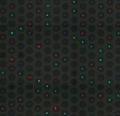
PostDoc
E-mail: j.f.swennenhuis@utwente.nl
Telephone: +31 53 489 4724
Address: Faculty of Science and Technology
Medical Cell BioPhysics (MCBP)
Building: Carré
Room: CR4431
Drienerlolaan 5
P.O. Box 217
7500 AE Enschede
The Netherlands
Project goal
Development of workflows for isolation and following molecular analysis of Circulating Tumor Cells.
Circulating Tumor Cell Analysis:
The challenge of working with Circulating Tumor Cells (CTC) involves multiple complicating factors which have to be overcome and combined for a successful workflow:
- The isolation of the CTC’s out of a large excess of other cells.
- Single cell analysis: The low amount of biological material which has to be secured.
- The usability of the workflow in clinical practice and not only in research setting.
CTC isolation:
Only 1-10 CTC’s can be found in between 50 billion red blood cells and 50 million white blood cells. Existing technologies enrich the CTC’s to a level where quantification of the CTC’s is possible. Here a few CTC’s are still in between a few thousand white blood cells. For optimal CTC analysis, no background cells are allowed. To reach this goal an instrument has been developed in our labs. All cells are captured in a Self Sorting Nanowell chip where each well automatically contains a single cell. Each cell can now be individually addressed and punched into a PCR cup using a micro needle combined with a fluorescence microscope and automatic stages.


Figure 1: Fluorescence microscopy image of cells captured in a Self Sorting Nanowell chip. Cells can be identified according to their fluorescence labeling.

Figure 2: After identification of the cells (1) the cells can be punched out of the nanowells by punching the cell and bottoms out of the chip into a PCR cup.
Single cell analysis:
Of main interest in case of cancer is the change of the DNA of the cells. Mutations in the DNA generally cause the uncontrolled growth of the cells or, later in the disease, the resistance to therapies. Standard laboratory tests can often be done on single cells but only a limited amount of tests can be done on DNA of a single cell. If more targets have to be analyzed the DNA has to be amplified using Whole Genome Amplification protocols. Depending on the downstream application such as Next Gen Sequencing or Comparative Genome Hybridization, different amplification strategies can be applied to the single cell.

Figure 3: Amplification curves of the DNA of different types single cells amplified with a Whole Genome amplification reaction and measured in a real time PCR machine.

Figure 4: Sanger sequencing of a gene with a specific heterozygous G to A mutation (arrow) picked up from amplified DNA from a single cell.
Usability in clinical setting:
At MCBP we focus on the development of techniques that directly be applied in clinical practice. In the case of Circulating Tumor Cells this starts with the blood sample. If no fixative is added to the blood after blood draw, the CTC’s will break down within 24 hours. Adding fixative saves the CTC’s and allows clinical studies using multiple clinical sites. Downside is that such a fixative has a negative effect on the DNA quality which has to be overcome in the procedures we develop.
Collaborations
- VyCAP B.V., Deventer, The Netherlands.
- Universitätsklinikum Düsseldorf , Experimentelle Chirurgische Onkologie, Germany.
- Institute for Cancer Research, London, UK.
- Universitair medisch centrum Groningen, The Netherlands
- Asper Biotech Ltd. Tartu, Estonia
